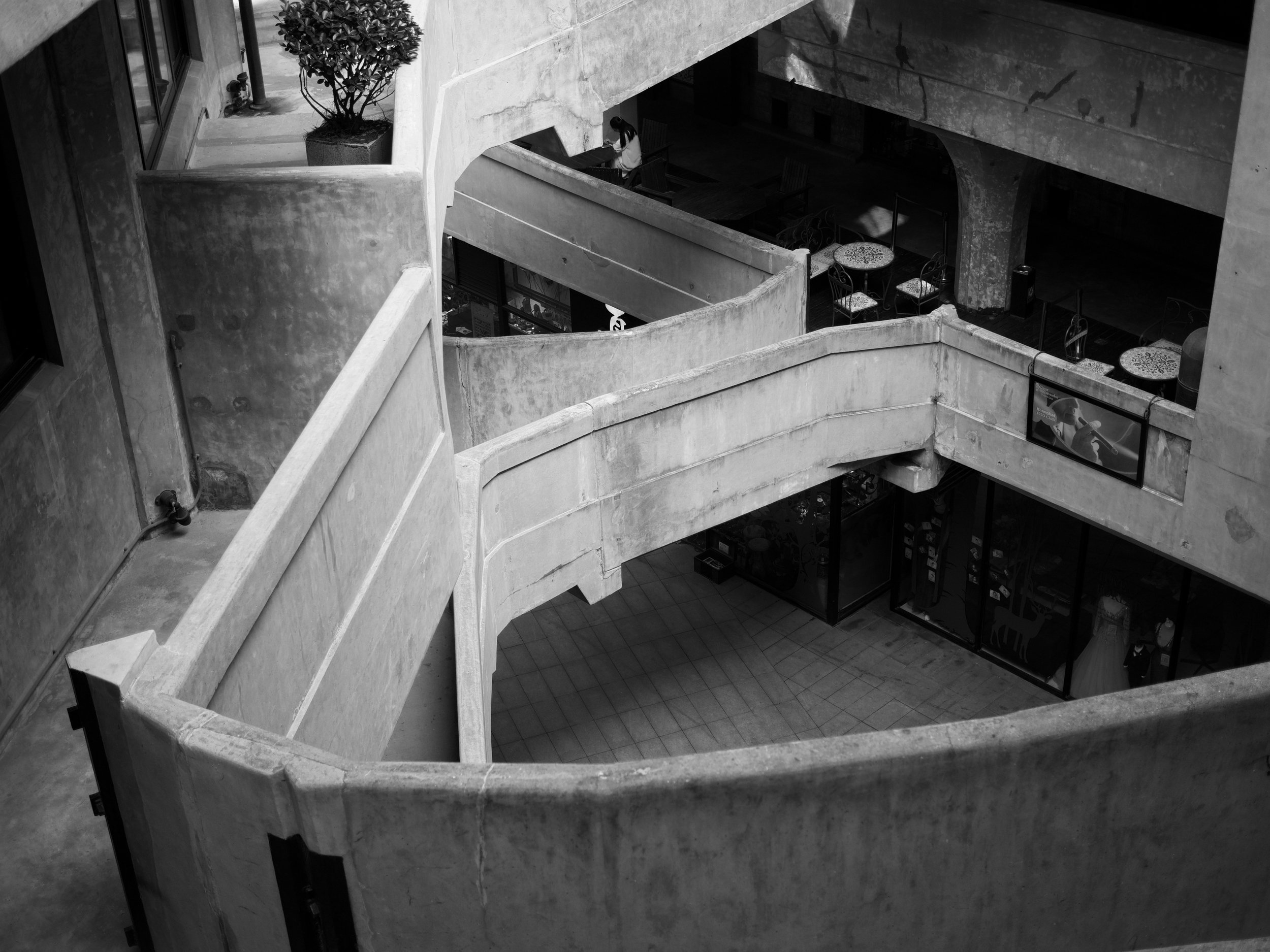The first thing I noticed when I arrived are the patterns. The front of the building has 19 rows of 12 circular windows running the entire width of the structure - these were originally vents to keep air flowing throughout the slaughterhouse. Looking like a giant step sequencer, they provided a starting point for my composition Old Milfun, the building’s original name.
I also referred to a document that revealed the Feng Shui of the building. It claims that the number of windows, ramps, stairways and the shapes of the pillars were not arbitrary or dictated by structural concerns, but instead were designed to protect the outside world from the negative energies being unleashed inside. Even the location and building’s orientation were considered with Shanghai’s human residents’ spiritual safety in mind.
This folklore, combined with the structure, led to a composition that – just like the building itself – is full of maze-like patterns and sequences that circle and loop around again and again. I wanted to create a composition that was easy to get lost in, where you never quite know where you are – just like 1933, where I got lost many times.
We leave 1933 at midnight with my local guide Tian playing Chinese bells that I’d found in the city earlier that day.
The spaciousness of the sound in this next location – Nanshi Power Plant - captivated me and I ended up recording for over 45 minutes. There was definitely a meditative process going on – maybe an antidote to the intensity of sounds captured during the rest of the trip?
This towering building supplied the first electric light to Chinese people in 1897 and had a temporary stint as Pavilion of Future during the 2010 Shanghai World Expo. It is now known as the Power Station of Art, a 42,000 square metre museum and gallery.





































